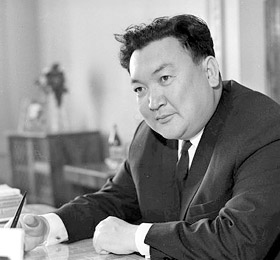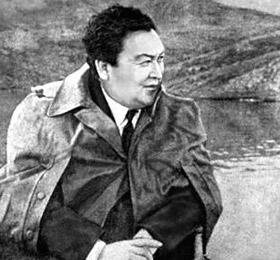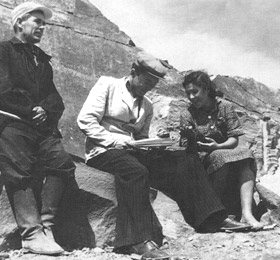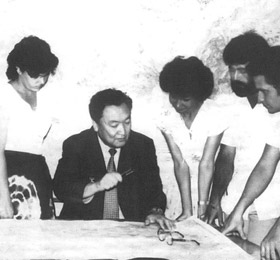Adil Temirgaliyev
Specialization: cell biology. Internship: Max Planck Institute for Medical Research, Germany.
 As a child, the future biologist originally from Semey loved to draw and invent superheroes. Today Adil is 24, and he is a doctoral student at the European Laboratory of Molecular Biology. In 2020, while still studying for a bachelor’s degree, he won a research internship in the competition of the Shakhmardan Yessenov Foundation. A year later he went to one of the most prestigious research institutes in the world. What is it like – to win, to do a research and what did he manage to achieve?
As a child, the future biologist originally from Semey loved to draw and invent superheroes. Today Adil is 24, and he is a doctoral student at the European Laboratory of Molecular Biology. In 2020, while still studying for a bachelor’s degree, he won a research internship in the competition of the Shakhmardan Yessenov Foundation. A year later he went to one of the most prestigious research institutes in the world. What is it like – to win, to do a research and what did he manage to achieve?
How did the choice of specialty take place?
I dreamed of becoming a doctor. I appreciated that doctors unravel the mysteries of diseases and treat people. Therefore, at school I studied biology hard in order to understand more about our body. And finally I fell in love with the science. Then at the university I joined the laboratory of Professor Ivan Vorobyov. Working under his guidance and mentorship, I realized the beauty and importance of cell biology, and gradually came to study this science.
How did you get ready and participate in the Yessenov Foundation competition?
I learned about the competition from friends who participated in different programs before. So I also applied for scientific internships. Applied several times! But I had little experience, and at that time I did not understand clearly what I wanted to do, so I passed only the third time. In the 4th year of my bachelor’s degree, I realized that I like mechanobiology, and began to study what would be useful to me in this field. I started to draw up a roadmap to achieve the goal. It included a list of laboratories where I would like to work and the necessary technical skills that I wanted to master. I told about it at the interview in the final of the competition. Thanks to the prepared plan, I felt confident, hoping that it would help me win, as well as the experience of research and understanding of what I wanted.
What else can you advise the contestants?
Being a participant in various competitions, I often received refusals. Believe me – this experience is also quite valuable. To future winners, I can only repeat what they have heard many times: the only way to learn anything is to try. Don’t be afraid to write to professors or to laboratories that seem inaccessible to you.
How did you prepare for the internship?
Because of the pandemic, it was extremely difficult to find a laboratory. Travel restrictions were inflexible, and at some point I began to lose hope. But my family and friends supported me. Every day I spent hours studying the rules of travel to different countries, looking for a laboratory, reading their scientific publications to find the best one. I was once again convinced that consistency and perseverance in work is the key factor to everything.
How did you do your internship?
It lasted six months, because I wanted to get results that could be included in a scientific publication. My main interest was in studying changes in the mechanical properties of cells. It is important to investigate them in order to understand how physical factors affect the main cellular processes. I worked under the guidance of Professor Ada Cavalcanti-Adam. She is one of the leading experts in the field of mechanobiology, her laboratory is widely known for its fundamental research. I have investigated how clustering (the grouping process) of integrins (cellular receptors) affects the collective migration of cells.
What have you achieved?
The study used an approach that included a combination of cell biology, chemistry and nanotechnology. Towards the end of the internship, we were able to obtain, albeit preliminary, but promising results that will help us understand more about the fundamental role of integrins in the wound healing process. I learned a lot of new things, how to conduct research in state-of-the-art laboratories. And attending the lectures of the Institute allowed me to see how first-class science works and get acquainted with high-profile scientists. I really liked that the laboratory was interdisciplinary. Working together with representatives of different scientific disciplines has taught me to think more broadly and look at the problem from different angles. In general, the internship is one of the brightest events of my life. Research, amazing trips, new friends and colleagues, inspiration and new opportunities. I got into this science – mechanobiology – even more and realized where I want to move on.
What did you do in your free time there?
I traveled, learned another culture. The Institute’s office is located in one of the warmest and most beautiful cities in Germany. In addition, there are many scientific institutions in Heidelberg, such as EMBL, DKFZ и ZMBH, where the best scientists from all over the world gathered. I went to Berlin, and spent the Christmas holidays in Prague. I managed to visit many attractions and museums. I also was able to meet with Kazakhstanis who study or work in Europe.
Have any plans for the next couple of years?
I have entered and am studying for a doctoral degree at the European Laboratory of Molecular Biology. I study the migration of T cells. I envision connecting my future with the academy. And in addition to research, I also want to do teaching.
What are your other interests?
I like to read popular science literature. Lately I read Robert Sapolsky’s “Biology of Good and Evil” that I liked much. I regularly listen to Kazakhstani podcasts like Zamandas and Dope Soz. And I want to start learning German.
19.10.22, Stories
Seen by: 1,008





